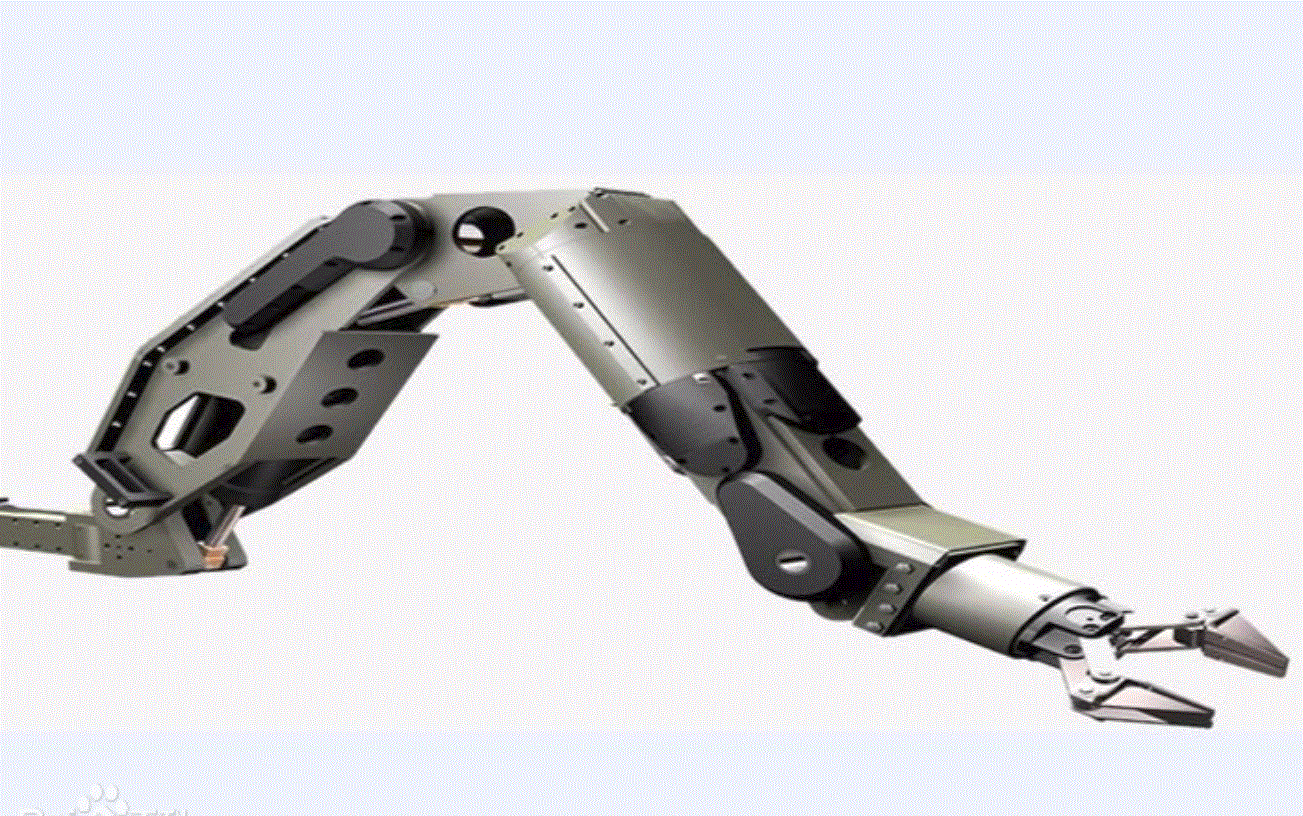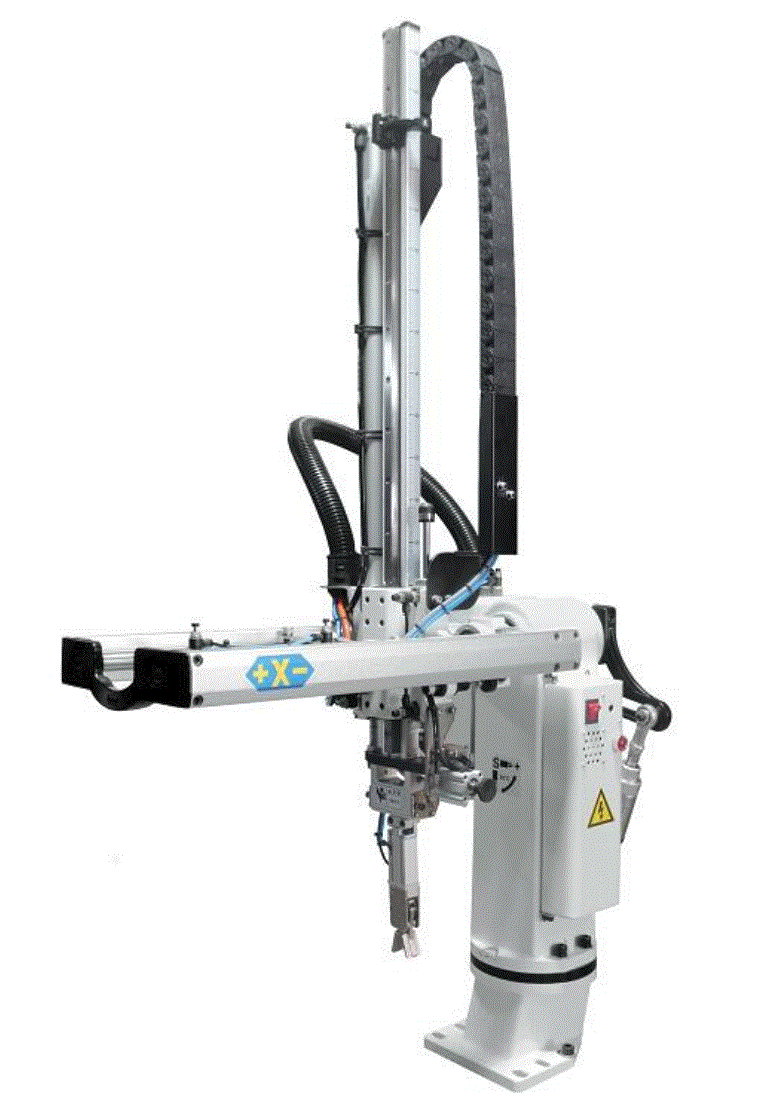|
What is a Manipulator?
The manipulator is a kind of automatic operation device which can imitate some movement functions of human hand and arm and is used to grasp and carry objects or operate tools according to fixed procedures. The feature is that all kinds of expected tasks can be completed by programming, and the structure and performance have the respective advantages of human and mechanical mobile phones.
The manipulator is the first industrial robot and also the earliest modern robot. It can replace the heavy labor of humans to realize the mechanization and automation of production and can operate in a harmful environment to protect personal safety. Therefore, it is widely used in mechanical manufacturing, metallurgy, electronics, light industry, and atomic energy departments.   Constitute ConstituteThe manipulator is mainly composed of three parts: actuator, driving mechanism, and control system. The hand is a part used to hold the workpiece (or tool). According to the shape, size, weight, material, and operation requirements of the object to be grasped, there are various structural forms, such as clamping type, holding type, and adsorption type. The movement mechanism enables the hand to complete all kinds of rotation (swing), movement, or compound movement to achieve the specified action and change the position and posture of the object to be grasped. The independent motion mode of the moving mechanism, such as lifting, stretching, and rotating, is called the degree of freedom of the manipulator. In order to grasp the object with arbitrary position and orientation in space, six degrees of freedom is needed. The degree of freedom is the key parameter of manipulator design. The more degrees of freedom, the greater the flexibility of the manipulator, the wider the versatility, and the more complex its structure. The general special manipulator has 2-3 degrees of freedom. The control system completes the specific action by controlling the motor of each degree of freedom of the manipulator. At the same time, the feedback information from sensors is received to form a stable closed-loop control. The core of the control system is usually composed of single-chip microcomputer or DSP and other micro-control chips, and the required functions are realized by programming.
Actuator The actuator of the manipulator is divided into the hand, arm, and trunk; 1. Hands The hand is mounted at the front of the arm. The inner hole of the arm is equipped with a transmission shaft, which can transmit the application to the wrist to rotate, stretch and bend the wrist and open and close the fingers. The structure of the manipulator is similar to human fingers, which can be divided into three types: no joint, fixed joint, and free joint. The number of fingers can be divided into two fingers, three fingers, four fingers, and so on. According to the shape and size of the clamping object, the chuck with various shapes and sizes can be equipped to meet the needs of the operation. The so-called hand without fingers generally refers to a vacuum sucker or magnetic sucker. 2. Arm The finger is used to transport the workpiece to the desired position. In order to make the manipulator work correctly, the three degrees of freedom of the arm should be accurately positioned. 3. The trunk is a bracket for installing arms, power sources and various actuators.
Driving mechanism There are four kinds of driving mechanism used in manipulator: hydraulic drive, pneumatic drive, electrical drive, and mechanical drive. 1. Hydraulically driven Hydraulic-driven manipulator usually consists of hydraulic motor (various oil cylinders, oil motors), servo valve, oil pump, oil tank, etc. the driving system is operated by the actuator of driving manipulator. Generally, it has a large capacity of grabbing (up to several hundred kilograms), and its characteristics are compact structure, smooth action, impact resistance, vibration resistance, and good explosion-proof performance. However, the hydraulic components require high manufacturing accuracy and sealing performance, otherwise oil leakage will pollute the environment. 2. Pneumatic driven Its driving system is usually composed of a cylinder, air valve, air tank, and air compressor. Its characteristics are a convenient air source, quick action, simple structure, low cost, and convenient maintenance. But it is difficult to control the speed and the air pressure should not be too high, so the snatch ability is low. 3. Electric drive is one of the most widely used driving methods for manipulators. It is characterized by the convenient power supply, fast response, the large driving force (the weight of joint type has reached 400kg), convenient signal detection, transmission and processing, and can adopt a variety of flexible control schemes. The step motor is generally used as driving motor, and DC servo motor (AC) is the main driving mode. Due to the high speed of the motor, the reduction mechanism (such as harmonic drive, RV cycloid pinwheel drive, gear drive, screw drive, and multi-bar mechanism) must be adopted. Some manipulators have begun to use direct drive (DD) with high torque and low-speed motor without deceleration mechanism, which not only simplifies the mechanism but also improves the control accuracy. 4. Mechanical driven The mechanical drive is only used for fixed action. A cam mechanism is used to regulate the action of the linkage. It is characterized by reliable action, high working speed, and low cost, but it is not easy to adjust. Others use the hybrid drive, that is, liquid-gas or electro-hydraulic hybrid drive. Control system The elements of manipulator control include work order, position, action time, speed, acceleration, and deceleration. The control of the manipulator is divided into point control and continuous trajectory control. The control system can be designed with digital sequence control according to the requirements of action. It first needs to program and store it. Then according to the prescribed program, the manipulator is controlled to work. There are two storage methods: separate storage and centralized storage. Separate storage is to store the information of various control factors in two or more storage devices, such as sequential information stored in pin plate, cam drum, perforated belt; position information stored in time relay, constant speed rotary drum, etc.; centralized storage is to store all the information of various control factors in a storage device, such as magnetic tape, magnetic drum, etc. This method is used when sequence, position, time and speed must be controlled at the same time. The latch plate is used in a situation where the program needs to be changed quickly. To change a program, only one plug-in board can be replaced, and the same plug-in can be used repeatedly; the length of the program contained in the perforated tape is unlimited, but if there is an error, it must be replaced completely; the information capacity of the punch card is limited, but it is easy to replace and save and can be reused; the magnetic core and magnetic drum are only suitable for occasions with large storage capacity. As for which control element to choose, it is determined by the complex and precise procedures of the action. For the manipulator with complex movement, the control system of seeking advice and reappearance is adopted. More complex manipulators use digital control systems, minicomputers, or microprocessors. The pin plate is the most used control system, followed by the cam drum. It is equipped with many cams, each cam is assigned to a moving shaft, and the drum will complete a cycle once a revolution.
|